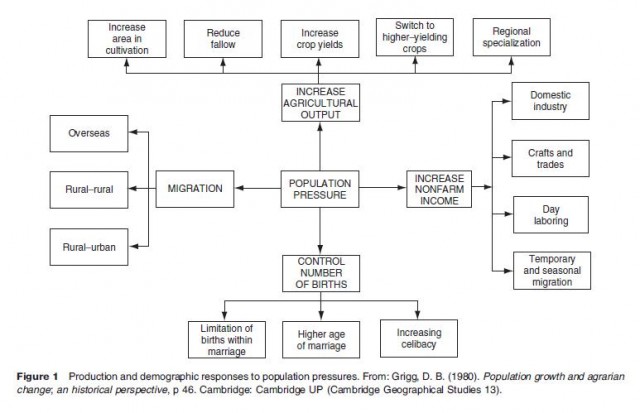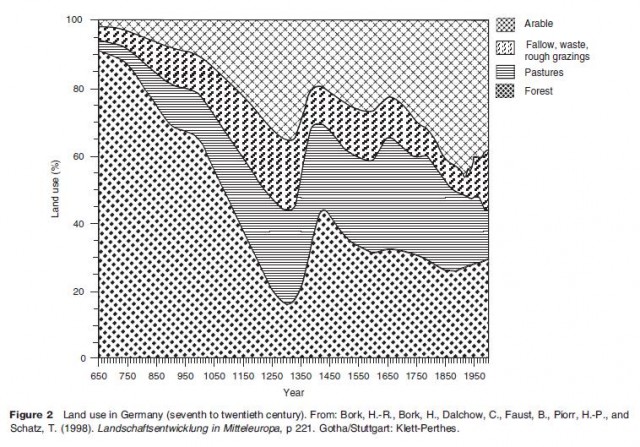Agrarian Transformations
For thousands of years, landscape and society have been heavily influenced by developments in agriculture. In most preindustrial societies, agriculture occupied the majority of the population. Holland was an early exception, with the majority of the population already living in towns at the end of the sixteenth century. Most countries in Western Europe reached this point somewhere during the first half of the twentieth century, but for Europe as a whole even in the beginning of the twenty first century half the population is still considered 'rural'. Transformations – defined as qualitative changes or events that occur when something passes from one state or phase to another – in agriculture therefore were important developments that influenced large parts of the population, as well as the landscape.
Most agrarian historians, following pioneering work by, among others, the Danish historian, Esther Boserup, nowadays see population pressure as the main driving force for developments in the preindustrial countryside. This is elaborated by the geographer David Grigg in a model (Figure 1) that shows how population pressure can lead to different developments, not only changes in agriculture, but also a growth of nonagricultural activities and emigration, as well as feedback mechanisms such as birth control.

For this article, in particular the top row of the diagram is important. Reclamation of new fields is perhaps the most obvious result of a growing demand for food and is certainly the theme that has received most attention from historical geographers. In particular, the period of population growth from the tenth to the early fourteenth century led to reclamations in most parts of Europe. A later period of population growth, the so called 'long sixteenth century' (c. 1450 to c. 1650), was characterized more by innovations within the existing arable and pasture lands and is less clearly visible in the landscape. The diagram also shows effects such as regional specialization and growth of urban populations that led to a growing economic interdependence in times of population pressure.
When phases of population pressure led to reclamations and to a growing interdependence, periods of decline could bring the opposite: land desertion and a certain degree of economic de specialization and disintegration. Both phases were characterized by different types of development, whereby times of crisis often showed the more fundamental, qualitative changes (transformations), making the conditions to profit maximally from a later period of renewed growth. In this article, we will give a short overview of the main stages in the development of the agrarian economy and landscape. The general picture of the development of agrarian land use in Central Europe is given in Figure 2. Particularly the rise and fall of the size of the arable closely followed the development of population size.

Early and High Medieval Europe